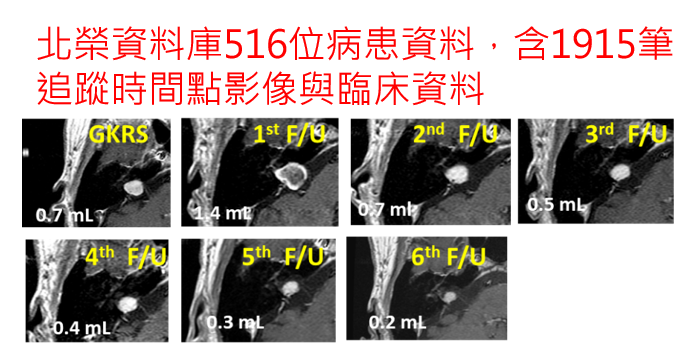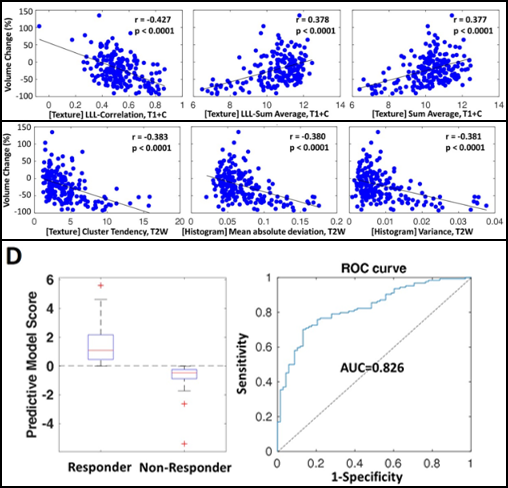| Technical Name | Artificial intelligence driven automatic tumor detection and follow up, and precision medicine model for acoustic neuroma | ||
|---|---|---|---|
| Project Operator | National Yang-Ming University | ||
| Project Host | 吳育德 | ||
| Summary | Vestibular schwannoma (VS), also termed acoustic neuroma, is a benign intracranial tumor that grows slowly in the internal auditory canal and extends to the cerebello-pontine angle. Over time, tumor growth is known to cause gradual hearing impairment, tinnitus, dizziness, syncope, trigeminal neuropathy, and facial palsy. |
||
| Scientific Breakthrough | We retrospectively collected the MR images and tumor contours of 516 participants with VS, these had been obtained by the Gamma Knife team at Taipei Veterans General Hospital, Taiwan. The trained dual-pathway U-Net model used multi-parametric MR images (T1-weighted, T1-weighted with contrast, and T2-weighted) as training input, achieving the testing dice score: 0.90. |
||
| Industrial Applicability | The assessment system includes the image pre-processing workflow, automatic segmentation and treatment response prediction algorithm. This pipeline is not only useful for clinical physicians to assess the VS treatment response, and also can be adopted to other kinds of benign and malignant brain tumor to build up their own assessment systems. This technique provides another health care solution that can be implemented at the devices of radiotherapy/radiosurgery to assist the treatment planning. |
||
| Keyword | vestibular schwannoma radiosurgery gamma knife magnetic resonance imaging deep-learning convolutional neural network automatic tumor segmentation radiomics machine learning treatment response prediction | ||
- L850818@gmail.com
other people also saw







